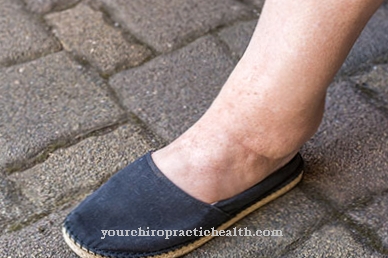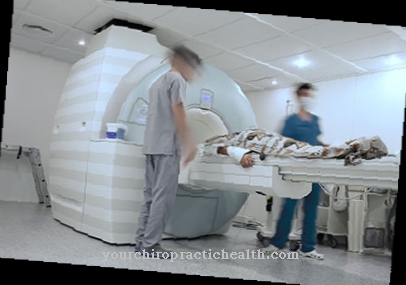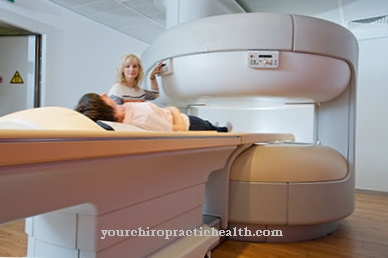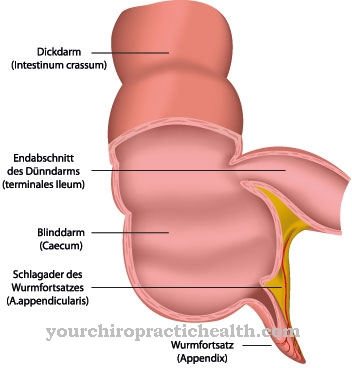The Pycnodysostosis is a disease of the osteopetrosis group. It is characterized by the constant build-up of bone material without old bone parts being broken down. In contrast to the other syndromes of this type, the disease remains limited to the bones.
What is pycnodysostosis?

© matis75 - stock.adobe.com
The Pycnodysostosis was first described in 1962. It is a very rare hereditary bone disease that is characterized by the constant increase in bone mass. There are no data on the exact prevalence of this disease. However, the frequency is assumed to be less than one in a million. In total, only a few hundred cases of this disease have been observed to date.
The main symptom is an increased fragility of the bones, because the osteoclasts cannot function properly because no remodeling processes can take place in the bone. The bones are constantly being built up without the old bone substance being broken down. As a result, a very high bone density develops. However, this is associated with extreme brittleness of the bones.
The pycnodysostosis thus belongs to the group of osteopetroses. In contrast to the classic osteopetrosis, which have already been described again and again in the past centuries, pycnodysostosis usually does not show any anemia or damage to the cranial nerves. Therefore, it can be easily differentiated from other osteopetroses. The diseases of the form circle of the osteopetroses were in the past also as Marble Bone Disease designated.
This name indicates that the bones are very dense and firm, but also extremely brittle and brittle. The reason for this condition is the lack of degradation processes by the osteoclasts. New substance is constantly added to the old bone substance without the remodeling process, which leads to a loss of elasticity in the bones.
causes
The cause of pycnodysostosis is to be found in a gene mutation in a gene on chromosome 1. It is the CTSK gene, which is responsible for coding the cathepsin K enzyme. Kathepsin K stimulates the bone-breaking cells (osteoclasts) to break down bone substance as part of the remodeling process. Due to a lack of Kathepsin K, this process cannot take place here. New bone substance is only constantly being built up. The disease is inherited as an autosomal recessive trait.
Symptoms, ailments & signs
Pycnodysostosis manifests itself primarily in osteosclerosis. In contrast to osteoporosis, osteosclerosis is characterized by a constant build-up of bone, which leads to a high bone density. However, the bones are fragile and prone to spontaneous fractures. At the same time, the patients are moderately short. The body size can reach up to 1.50 meters.
Acroosteolysis is unexplained in the terminal phalanges. This means that the end links of the finger and toe bones show signs of disintegration. The collarbone also appears dysplastic. In addition, characteristic skull anomalies occur, which show up in an enlarged skull volume, in switching bones between the individual skull plates and the persistence of the large fontanel.
In addition, it can lead to damaged and abnormally shaped teeth (pointed and conical), which are also poorly positioned. Teeth eruption is often delayed. Occasionally, brittle and irregularly shaped nails appear. Anemia and cranial nerve damage are usually not part of the symptom complex of pycnodysostosis. In very rare cases, however, anemia, enlarged liver, sleep apnea, breathing difficulties and general haematological disorders can occur. Mental development is normal.
Diagnosis & course of disease
Pycnodysostosis is a rare disease, but it can also be differentiated from other osteopetrosis. The genetic defect is defined as a mutation in the CTSK gene on chromosome 1. A family history can clarify whether cases of this disease have already occurred in close relatives.
In the differential diagnosis, pycnodysostosis must be differentiated from other osteopetrosis, osteoporosis, dressocranial dysplasia and idiopathic acroosteolysis. Pycnodysostosis can be confirmed by x-rays of the skull and skeleton. A genetic test should bring complete certainty.
Complications
Because of pycnodysostosis, those affected suffer from relatively high bone density. However, despite the increased bone density, the bones are fragile and break easily, so that patients suffer from fractures and other injuries more often due to pycnodysostosis. As a rule, patients are therefore reliant on increased precautionary measures to avoid serious injuries.
However, it is not uncommon for them to be short stature. In some cases, pycnodysostosis can also have a negative impact on teeth, making them break off easily or have an unnatural shape. Most of those affected also suffer from brittle nails as a result of the disease, which also have an irregular shape. Some internal organs can be enlarged as a result of the disease and it is not uncommon for breathing difficulties to occur.
Pycnodysostosis, however, has no negative impact on the patient's mental development. A causal treatment of pycnodysostosis is usually not possible. The person affected is dependent on regular checks and examinations so that nerves are not pinched. In the worst case, this can lead to paralysis of the entire body. The life expectancy of the patient is usually not influenced by pycnodysostosis.
When should you go to the doctor?
Pycnodysostosis must always be treated by a doctor. It is not possible to treat the disease by means of self-help. The doctor should be consulted in the case of pycnodysostosis if the person concerned suffers from various bone problems. This can lead to short stature or deformation. Above all, the parents must observe the child and inform the doctor if necessary. Furthermore, deformations of the teeth or nails can indicate pycnodysostosis and must also be examined by a doctor. This is the only way to avoid further complications.
Pycnodysostosis is diagnosed and treated by a pediatrician or a general practitioner. There are no particular complications. However, since the disease can also affect the internal organs, these should be examined regularly.
Therapy & Treatment
Due to the hereditary nature of the disease, causal therapy is not possible. Treatment can only be symptomatic. This requires an interdisciplinary collaboration between the doctors. The constant orthopedic monitoring of the patient is important. Broken bones, which are very difficult to cure, have to be treated again and again.
The treatment concept also includes constant monitoring of the statics of the spine. The spine tends to develop a spondylolisthesis. Spondylolisthesis is an instability of the spine, which is characterized by the fact that its upper part can slide forward with the sliding vertebra. However, this cannot be determined easily, since this change is not immediately visible and also does not necessarily lead to complaints.
However, there is a risk of pinching nerves, which can ultimately lead to severe pain and paralysis. The prognosis of pycnodysostosis is favorable. It is not curable, but there is no progressive deterioration in the course of the disease.
You can find your medication here
➔ Medicines for painprevention
Pycnodysostosis is a hereditary disease with an autosomal recessive inheritance. In affected families, genetic counseling can help prevent this disease from being passed on to offspring. First, a genetic test should be carried out.
If both parents carry this gene, there is a 25 percent chance the offspring will inherit the disease. In the case of people who are already ill, prophylaxis against further bone fractures and changes in the spine consists primarily of constant medical supervision.
Aftercare
Since the treatment of pycnodysostosis can only be symptomatic and the disease is incurable, there is no follow-up of the disease in the actual sense. However, regular visits to the doctor and follow-up care for some treatments are essential. The fractures caused by pycnodysostosis require regular medical supervision.
Because the disease makes fractures more difficult to heal and complications are more likely, it should be more intense than normal fractures. Regular control of spondylolisthesis is important, as this occurs more frequently in people with pycnodysostosis. If the patient has already suffered from such a slipping of the vertebrae, this must also be followed up.
The orthopedic rehabilitation measures, accompanied by a doctor or orthopedist, are ideal after successful treatment of the spondylolisthesis and freedom from pain for the patient. Usually they can be used after about twelve weeks. These measures usually consist of physical therapy exercises, relaxation exercises and sporting activity, which can also be combined with other measures such as psychotherapy.
These measures are intended to strengthen the abdominal and back muscles. A general orthopedic control of the patient is also necessary, since pycnodysostosis is not a progressive disease and can generally be treated well, but side effects can always occur.

.jpg)






















.jpg)



